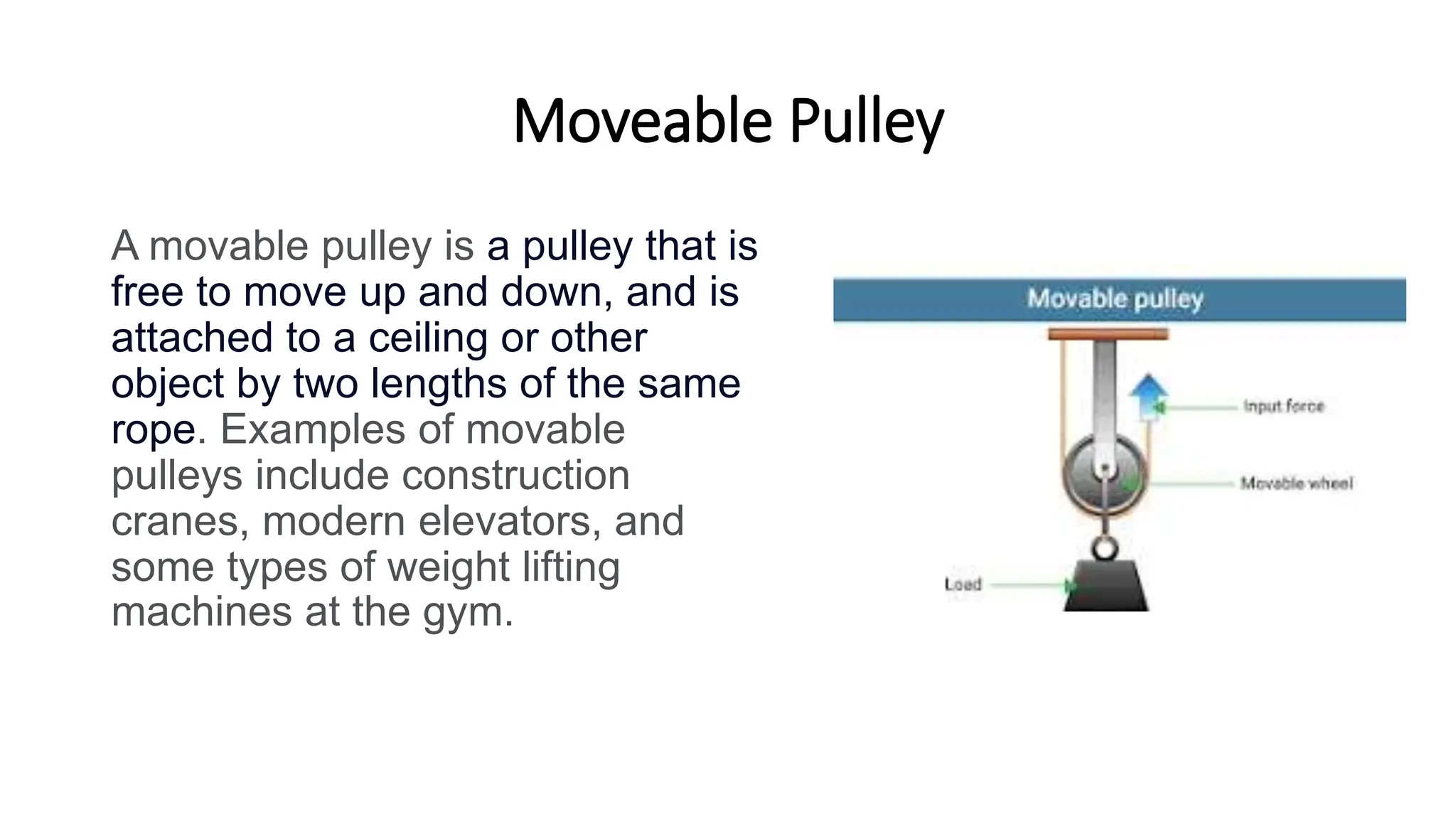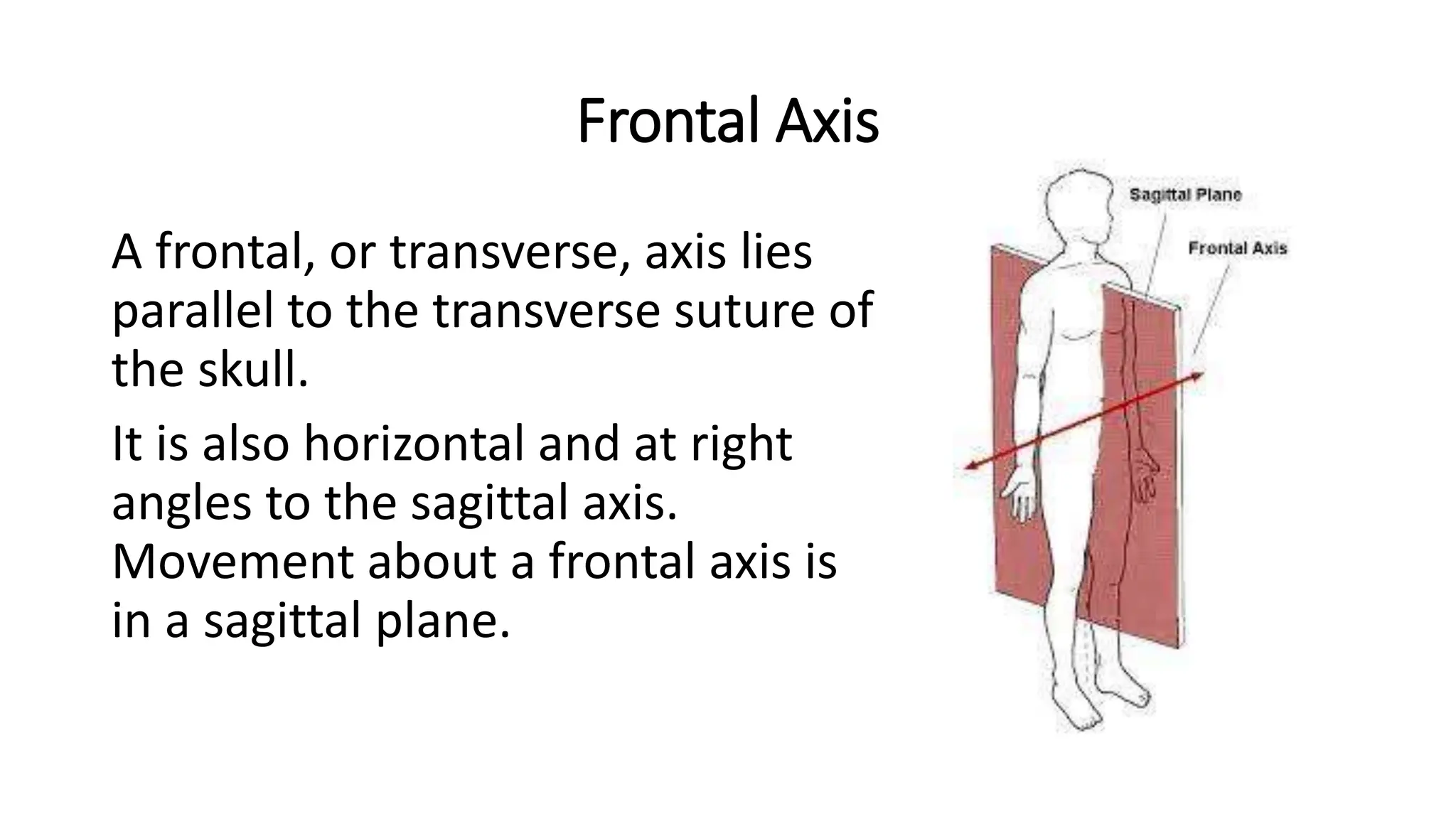The document discusses the concept of pulleys, their types (fixed and movable), and their applications in kinesiology, particularly in relation to mechanical advantage during weight lifting. It also defines speed and velocity, explaining their measurements and significance in movement, as well as the types of axes related to human body movements. The document provides insights into how axes influence joint movements in the body.






















